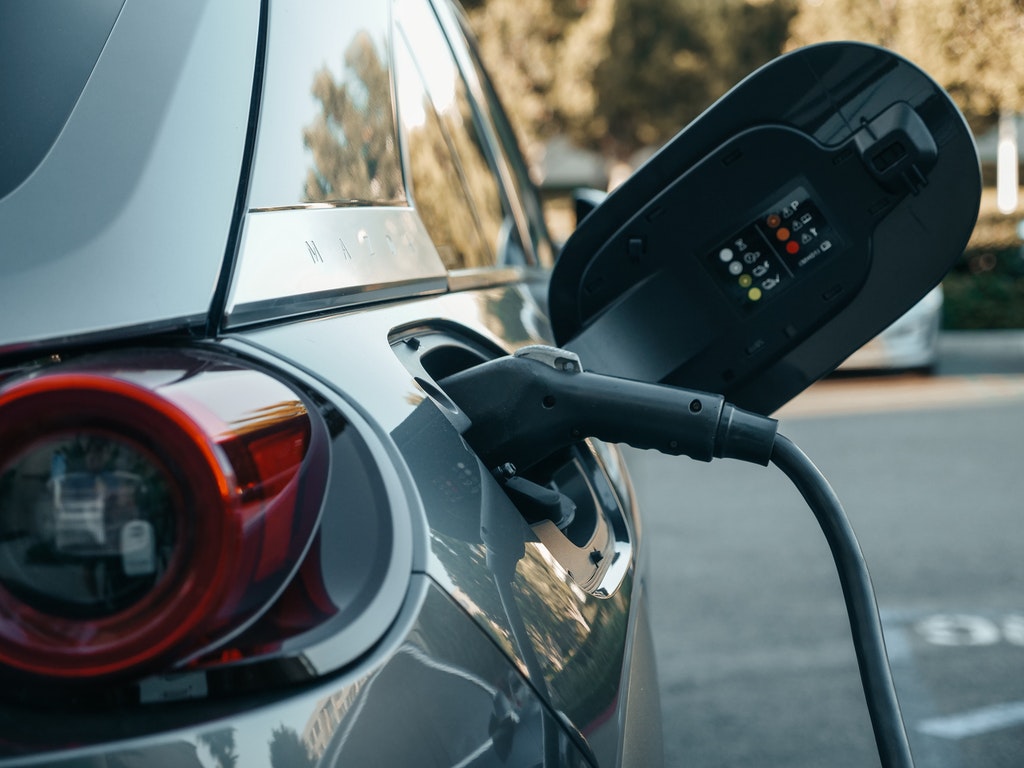We’ve decoded the difference between various types of electric vehicles (EV). Below is a list of different kinds of hybrids and EVs and their pros and cons.
Mild Hybrid
The simplest and most cost-effective way of adding electric drivetrain components to a vehicle powered by an internal combustion engine is known as a Mild hybrid.
Advantages
- Powers many of the car’s electrical systems
- Fuel saved because of the stop-start system
- Lowers turbo lag by torque-filling until the engine comes on boost
- Lighter in weight when compared to other electric vehicles
- Less complexity
- Lower in cost
Disadvantages
- Increased cost and complexity when compared to internal combustion-only engines
- No mode to go full-EV
Examples
- Audi Q8
- Mercedes-Benz CLS450 / AMG CLS53
- Ram 1500
Series Hybrid
Also known as power split or parallel hybrid – a Series Hybrid is what most people think of when they think of a hybrid vehicle.
Advantages
- Superb efficiency at around-town speeds
- ICE powered by gasoline for longer range and journeys
- A good compromise between efficiency, usability and overall cost
Disadvantages
- More expensive than a purely ICE-driven vehicle of the same size
- Maximizing efficiency results in reducing power output
Examples
- Honda Insight
- Hyundai Ioniq Hybrid
- Toyota Prius
Plug-In Hybrid
The next logical step forward from the series hybrid system is the Plug-in Hybrid. With the ability to go longer distances on electric power alone, the plug-in hybrids can move closer to the fully electric vehicle. The term “plug-in” refers to the car’s capability to be plugged into an electric car charging station.
Advantages
- The better range over battery electric vehicles (BEVs) due to gasoline engines that can extend the range
- Cheaper when compared to BEVs
- Low maintenance cost when compared to series hybrids
Disadvantages
- Costlier to buy than series hybrids or mild hybrids
- Larger battery packs result in more weight
- More complex in-process and functioning than mild hybrids
Examples
- Mitsubishi Outlander PHEV
- Land Rover Range Rover P400e
- Mercedes-Benz GLC350e 4matic
Battery Electric
Battery electric vehicles are exactly what they sound like: A big battery with at least one electric drive motor connected to it.
Advantages
- Less maintenance than ICE, thanks to mechanical simplicity
- Loaded with instant torque
- Doesn’t emit noise pollution
- Electricity can work out to be cheaper than fuel, for now
- Lack of tailpipe results in no emissions and no emissions testing.
- Better vehicle handling due to low center of gravity
Disadvantages
- Pretty expensive than similar size series hybrids or ICE vehicles
- The range can be limited
- Charging the car can take up a lot of time
- Charging infrastructure will take some time
- Impractical for most people who cannot charge at home/office
- Heavier than similarly sized vehicles
Examples
- Chevrolet Bolt EV
- Nissan Leaf
- Tesla Model S, Model X, Model 3
Hydrogen Fuel Cell
A fuel cell takes hydrogen and oxidizes it to create an electrical charge, which is then channeled into a battery to be used by electric motors in cars.
Advantages
- All you need is hydrogen
- Silent operation
- Only water is emitted
Disadvantages
- Hydrogen prices are not stable and fluctuate regularly, often more expensive than fossil fuels.
- Poor infrastructure of refueling networks outside cities.
- Hydrogen tanks can take up a lot of passenger space or cargo room if the vehicle wasn’t designed from the ground up for fuel cells.
Examples
- Honda Clarity FCV
- Toyota Mirai
- Hyundai Nexo





